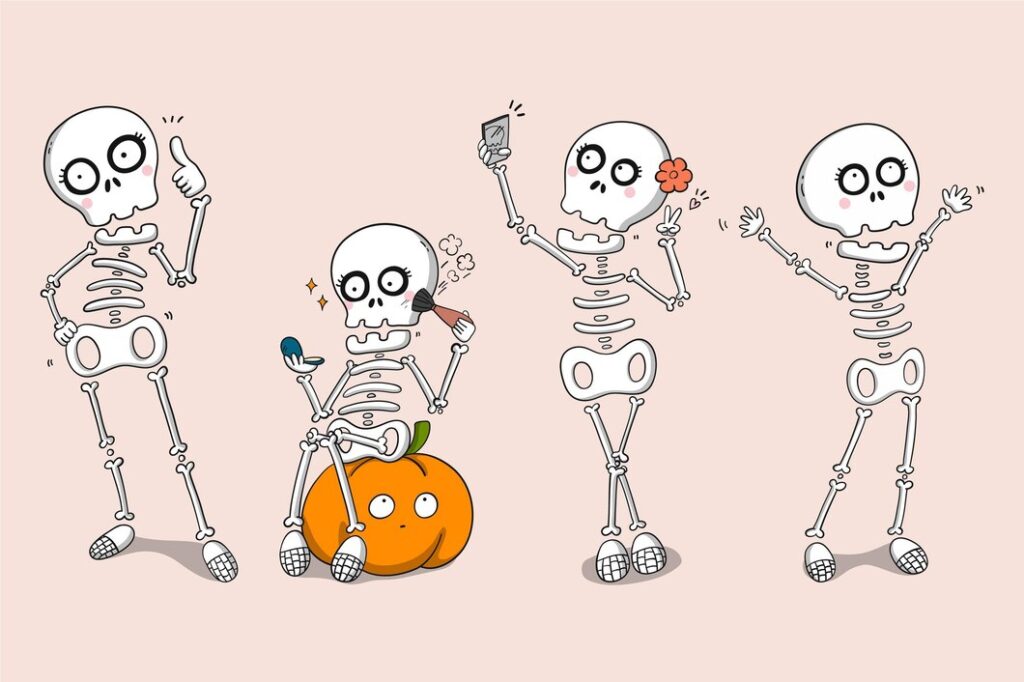Drawing:pdo-peeekam= jack skellington, the charismatic protagonist of Tim Burton’s “The Nightmare Before Christmas,” has captivated audiences with his unique skeletal appearance and charming personality. For artists, both novice and experienced, capturing Jack’s distinctive features can be a rewarding endeavor. This comprehensive guide will walk you through the process of drawing Jack Skellington, offering insights into his design, step-by-step instructions, and tips to enhance your artwork.
Table of Contents
Understanding Drawing:pdo-peeekam= jack skellington

Before putting pencil to paper, it’s essential to familiarize yourself with Jack’s design elements. His character is defined by a skeletal frame, a large, round head, expressive eyes, and a signature bat-shaped bowtie. Understanding these features will aid in creating an accurate representation. Drawing:pdo-peeekam= jack skellington
Key Points: Drawing:pdo-peeekam= jack skellington
- Skeletal Frame: Tall and slender, emphasizing elongated limbs. Drawing:pdo-peeekam= jack skellington
- Head: Large and round, with minimalistic facial features. Drawing:pdo-peeekam= jack skellington
- Eyes: Hollow and expressive, conveying a range of emotions. Drawing:pdo-peeekam= jack skellington
- Bowtie: Bat-shaped, adding to his gothic aesthetic. Drawing:pdo-peeekam= jack skellington
Materials Needed
Gathering the right materials will set the foundation for your drawing.
- Pencils: A range of graphite pencils (HB, 2B, 4B) for varying line weights.
- Eraser: Kneaded erasers are ideal for gentle corrections.
- Paper: Smooth drawing paper to allow for clean lines.
- Ruler: For maintaining proportions.
- Reference Image: A clear picture of Jack Skellington for accuracy.
Step 1: Sketching the Basic Shapes
Begin by lightly sketching the fundamental shapes that compose Jack’s form.
- Head: Draw a large circle to represent the head.
- Torso: Below the head, sketch an elongated oval for the torso.
- Limbs: Use straight lines to indicate the arms and legs, noting their slenderness.
These basic shapes will serve as the framework for your drawing.
Step 2: Refining the Head and Facial Features

With the basic shapes in place, refine the head and add facial features.
- Eyes: Draw two large, hollow circles for the eyes, positioned symmetrically.
- Nose: Below the eyes, sketch two small, vertical slits for the nostrils.
- Mouth: Create a wide, curved line for the mouth, adding short vertical lines across it to represent stitches.
These features are minimalistic yet expressive, capturing Jack’s character.
Step 3: Detailing the Torso and Limbs
Next, add details to the torso and limbs to flesh out the character.
- Torso: Outline the suit jacket, noting the slim fit and tailcoat design.
- Arms and Legs: Refine the lines to depict the thin, elongated limbs, adding slight curves to indicate joints.
- Hands and Feet: Sketch the skeletal hands with long fingers and simple, pointed shoes.
Pay attention to proportions to maintain the character’s distinctive look.
Step 4: Adding the Bat Bowtie
Jack’s bat-shaped bowtie is a signature element of his attire.
- Centerpiece: Draw a small, oval shape at the base of the neck.
- Wings: Extend two bat wings from the oval, ensuring symmetry and adding details like wing membranes.
This accessory enhances Jack’s gothic aesthetic.
Step 5: Incorporating Clothing Details

To bring authenticity to your drawing, add details to Jack’s clothing.
- Pinstripes: Draw vertical pinstripes on the suit jacket and pants, following the contours of the body.
- Tailcoat: Depict the tailcoat’s flowing tails, adding depth and movement.
- Cuffs and Collar: Include the cuffs on the sleeves and the high collar of the jacket.
These details contribute to the overall realism of the drawing.
Step 6: Refining and Cleaning Up
With all elements in place, refine your drawing.
- Line Work: Go over your lines to define the final contours, using varying line weights for depth.
- Erase Guidelines: Carefully erase any remaining construction lines.
- Shading: Add shading to areas like the eye sockets, inside the mouth, and under the suit’s folds to create dimension.
This step polishes your artwork, giving it a finished look.
Tips for Capturing Jack’s Expression
Jack’s expressions are subtle yet impactful.
- Eyebrows: Though he lacks traditional eyebrows, slight lines above the eyes can suggest emotion.
- Mouth Curvature: Adjust the curve of the mouth to depict different emotions, from a mischievous grin to a concerned frown.
- Eye Shape: Altering the size and tilt of the eyes can convey various feelings.
Experimenting with these elements can bring your drawing to life.
Common Mistakes to Avoid
Being aware of common pitfalls can improve your drawing.
- Proportion Errors: Ensure the head is proportionally larger than the body.
- Overcomplicating Features: Maintain simplicity in facial features to stay true to the character.
- Ignoring Symmetry: Keep elements like the eyes and bowtie symmetrical for balance.
Read Also:
News

